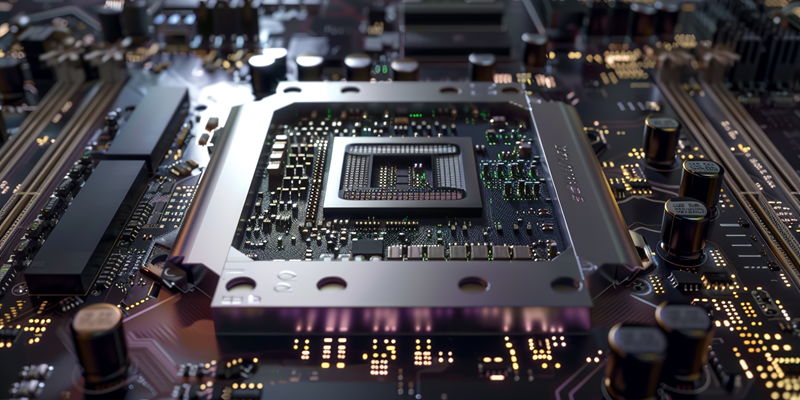In the fast-paced realm of computing, the focus is keenly fixed on AMD, as the tech industry buzzes with excitement for their upcoming Zen 5 core architecture. This evolution in CPU technology promises to surpass the typical step-by-step advancements, heralding a new era of performance capabilities. Zen 5 is poised to set a benchmark with its groundbreaking features, which are the subject of much anticipation among tech enthusiasts and industry specialists. As AMD readies this significant leap forward, the computing world looks on with high expectations, envisioning a transformation in processing power that could redefine efficiency and speed in high-performance computing tasks. This next-generation core architecture has the potential to change the course of CPU development, as AMD seeks to outdo itself and its competitors in the race for unrivaled computational supremacy.
Expectations from AMD’s Zen 5 Core Architecture
The Zen 5 Performance Prediction
The buzz surrounding AMD’s Zen 5 architecture can hardly be understated. The tech community has been abuzz with insider information suggesting a towering 40% performance increase over the current Zen 4. Such performance leaps are not just numbers on a page—they pave the way for profound improvements in application responsiveness, task execution speed, and overall system efficiency that users will directly experience across diverse computing environments.
Benchmarking the future of CPU performance has always been an intricate affair, but SPEC benchmarks stand as a reliable yardstick. These metrics are particularly significant in the context of Zen 5’s promise, unpacking the intricacies of the anticipated performance jump. For professionals and end-users, this potential 40% enhancement over its predecessor signals a new era in computational ability, one that transforms complex workloads and elevates everyday tasks.
The Zen 5 Ecosystem and its Wide-Ranging Impact
Desktop Domination with Granite Ridge
The desktop CPU segment anticipates a seismic shift with the arrival of “Granite Ridge,” the codename for the new breed of AMD CPUs, ushering in an age where compatibility converges with cutting-edge performance. The anticipation for Granite Ridge, which is expected to synergize seamlessly with the current AM5 platform, indicates an era where performance enhancements do not necessarily demand a sacrifice in terms of existing infrastructure.
Advancements within the Zen 5 architecture are also set to witness substantial gains in the mobile and enterprise sectors. AMD’s upcoming Strix Point APUs promise holistic integration of CPU, GPU, and a novel neural processing unit (NPU), debuting a formidable force in mobile computing. Meanwhile, the enterprise scene will not be left wanting. The expansive EPYC lineup suggests that capacities could balloon to as many as 192 cores, leveraging both Zen 5 and Zen 5C cores to meet the ever-scaling demands of the data center.
Technological Innovations Within Zen 5
Integrated AI and Machine Learning
The integration of Artificial Intelligence and Machine Learning within Zen 5 could very well mark a watershed moment for processing capabilities. Anticipated innovations such as a wider issue and a re-pipelined front-end are not merely incremental; they are transformative. These enhancements point toward an architecture that anticipates the needs of tomorrow’s applications, accommodating vast data sets and complex algorithms with newfound efficiency.
Next-generation memory and connectivity stand at the forefront of the steady march of technological progress, and Zen 5’s interplay with advancements in DDR5 memory and PCIe Gen 5.0 connectivity is a critical aspect of its design. The talk of further improvements to 3D V-Cache piques interest; such advancements could redefine the caching landscape, providing unprecedented access speeds to ever-larger volumes of data, meeting and exceeding the needs of professional and gaming applications alike.
Preparing for a Market Shift
Launch Timeline and Competitive Edge
A rumored launch schedule for AMD’s Zen 5 cores in the latter half of 2024 sets the stage for AMD to sustain its competitive edge in the market. AMD’s track record of delivering significant generational improvements is primed to replay itself with Zen 5. As the company has repeatedly ascended beyond the expected performance plateaus, one can reasonably speculate on another industry-rattling improvement that further elevates the CPU landscape.
The anticipated product lineups and strategies for Zen 5 are nothing short of tantalizing for technology enthusiasts and strategic planners alike. The Ryzen 8000 series, based on Zen 5 architecture, stands poised to redefine AMD’s position in the marketplace. Coupled with future tech events and keynotes—particularly the much-anticipated Computex—this narrative is set to unfold with breadth and ambition, offering a glimpse into both the immediate and distant future of processor technology.

